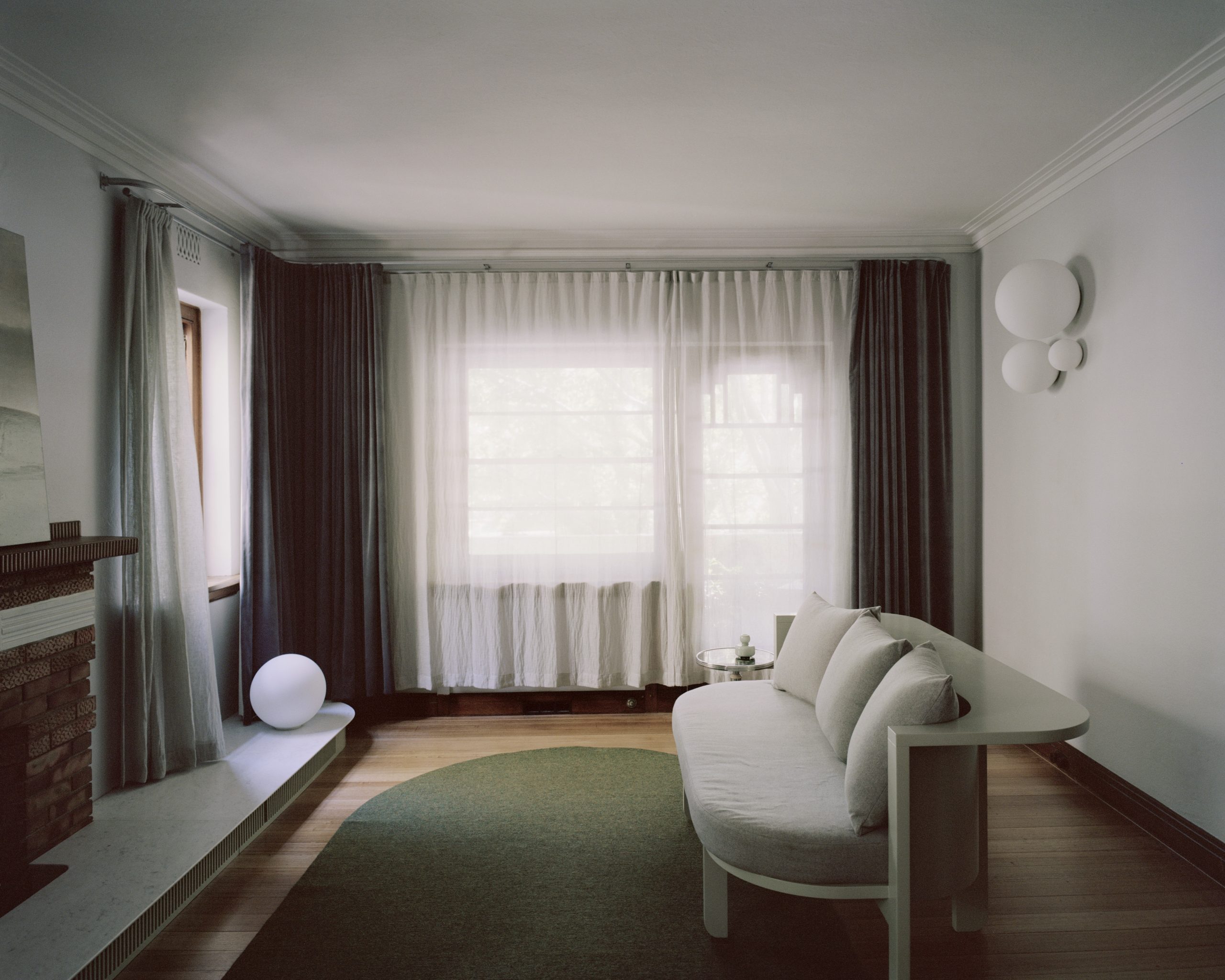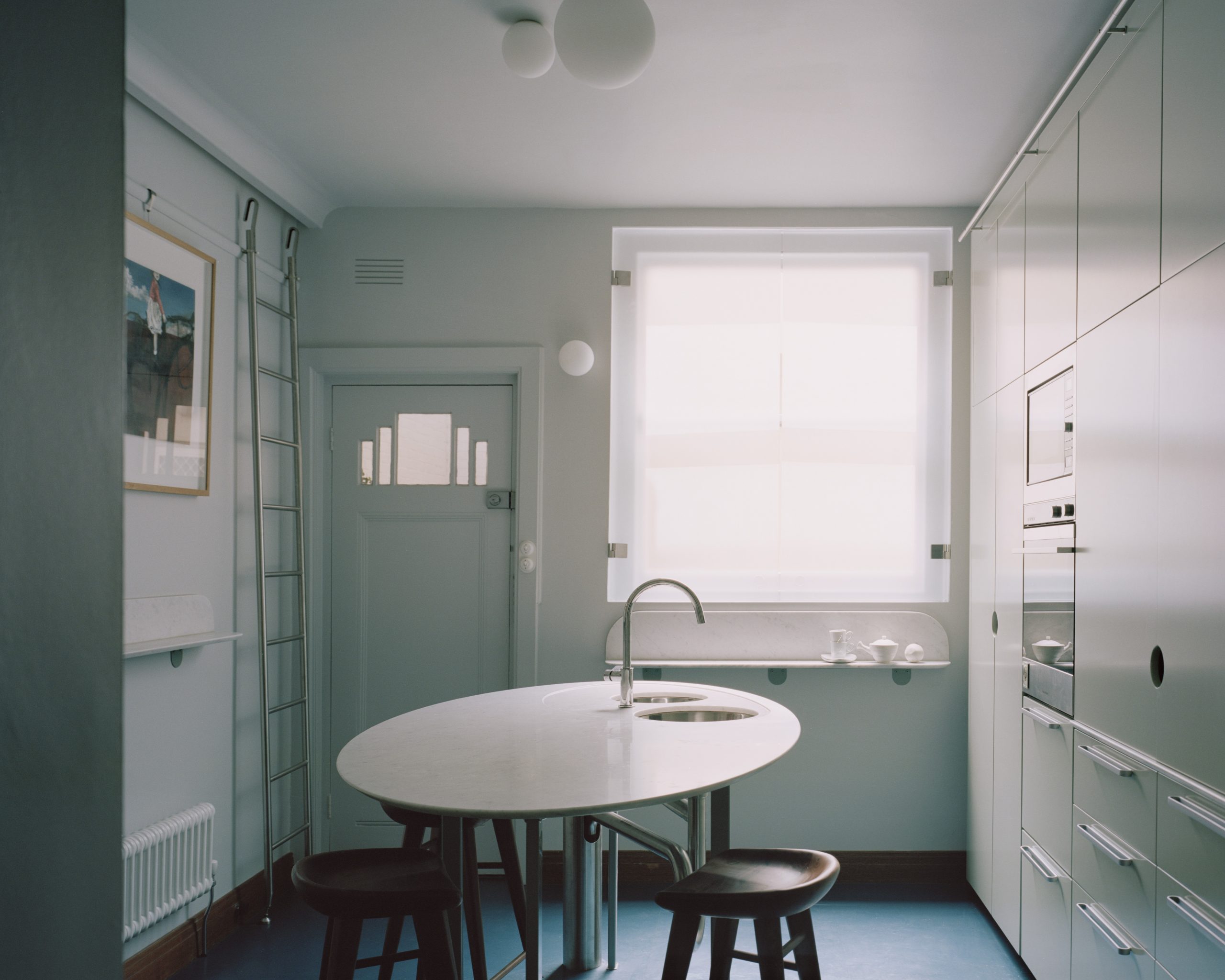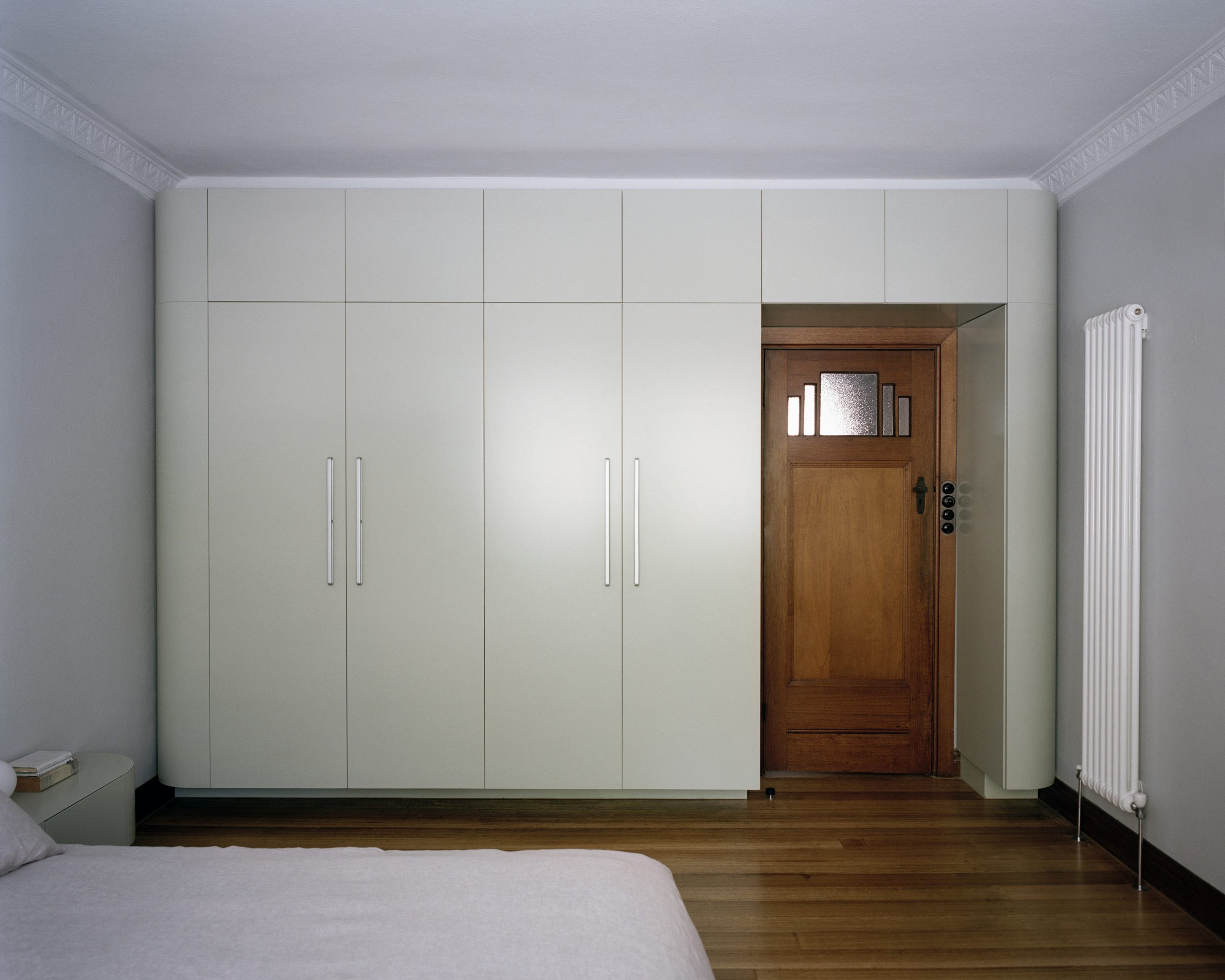Heritage Listing: None
This is a subtle and delicate renovation of a Streamline Moderne apartment in inner Melbourne. The new work presents a delightful response to the aesthetic and heritage values of the apartment, while creating beautiful new spaces for daily life.
Download a printable copy of Kia Ora Apartment Case Study (PDF 3MB).
Significance of the place
This small apartment is within the Kia Ora apartment complex, located on St Kilda Road, Melbourne’s ‘grand boulevard’. Designed by architect Lewis Levy and built in 1936, the large building was commissioned by the Dixon family, owners of the Kia-Ora cordial factory in nearby Prahran. The Streamline Moderne building captures the ambitions and cultural shifts of the interwar period. The apartments imagined a new ‘modern’ mode of living – both in the long lines and curved forms of the building and interiors, and in facilities provided, such as panel hydronic heating, walk-in wardrobes and modern kitchens, with a larger communal kitchen on the ground floor. Apartments of this kind catered to well-off homeowners who were moving away from larger houses with servant quarters to elegantly appointed, centrally located apartments.
The building is not currently afforded heritage protection. However, the owners’ corporation takes a careful and thorough approach to the custodianship of the building.
Opportunities
The apartment was in good condition overall. Much of the original fabric was intact – including details such as window frames, floorboards, skirting, cornices and architraves. There had been no major internal changes, with the exception of alterations to the kitchen and bathroom, which required ‘de-renovating’. The original plan was in place and well laid out, and the apartment was well located in the block with a balcony overlooking a large tree. The architect comments that they had great material to work with.
“In this small apartment, a lot of attention is paid to the domestic details of handles, light switches, shelves, texture and materiality, light and lighting and places to sit.” — BARACCO & WRIGHT
Challenges
The core challenge was that present in all heritage projects – to develop a sensitive design approach that would support and enhance the heritage values of the place. In this project, the principal question was how to add new elements – such as built-in joinery – while ensuring that the original interior details remained visible and valued. This project did not pose substantial practical, logistical or planning challenges.
Approach and outcome
This two-bedroom apartment has been renovated with great care and delicacy. Although the building is not formally protected, the architects followed Burra Charter principles in their work. The design approach was to add a new layer that evokes the feel and quality of Streamline Moderne – through the use of curved forms, colour, texture and materials – but is subtly new and contemporary. There are no major changes to the interior layout; instead the design concentrates attention on the details of domestic life.
The original dark timber floor, skirting, window frames, doors and architraves were all retained and restored. The new elements are lighter and paler – muted green joinery, white marble tables and benches, glass spheres of light and pale grey walls are juxtaposed against the darker Moderne features. Curved forms, inspired by the original building, become an effective way to respect and give space to the heritage fabric while creating beautiful new living spaces.
The additions are designed as a series of insertions – built-in cupboards curve away from the walls and ceiling, creating a sense of depth and revealing the original cornice and architraves. The rounded ends of the new Carrara marble benches, shelves and hearth allow these elements to float within the heritage rooms. The kitchen bench has become a large oval table – a place to sit as well as a place to prepare food and wash dishes. In the small bathroom, curved tiles create a unified space.
Throughout the renovation, joy is found in small, everyday elements. Door, window and cupboard handles, light switches and small shelves – original and new – are all considered as part of a coherent and integrated interior. The places to sit are carefully considered – custom designed furniture occupies beautifully lit spaces.
Modest in scale, but large in ambition, this project exemplifies the potential of close attention to interior quality and detail.
Lessons
- Highly refined subtle design of new elements evokes the feel of the Streamline Moderne period, while reading as clearly new.
- The curved forms allow the new elements to pull back and reveal the heritage fabric.
- Significant improvements can be achieved through close attention to detail.
Project team
Original Architect: Lewis Levy 1936
Architect: Baracco & Wright – Louise Wright, Mauro Baracco and Jonathan Ware
Builder: ATMA Builders




